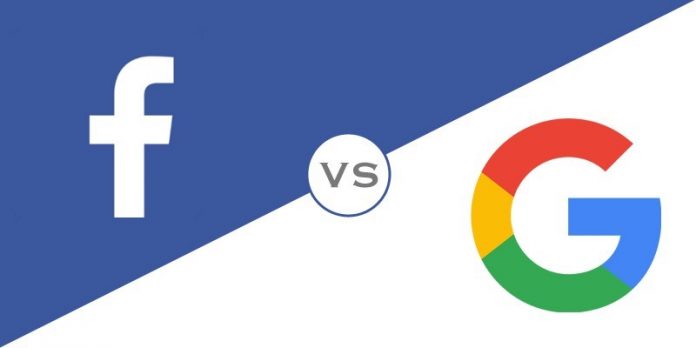Facebook and Google are two big giants in the world of technology. And it’s no wonder that why digital marketers keep them on first priority for advertisements.
By Lissa Doniro
But most of the times, it becomes heck of a daunting task to prioritize one over another. Both the platforms possess different potential in their own way. This article, however, highlights the 5 core differences between Facebook Pixel and Google Remarketing to help digital marketers come to a wise conclusion in accordance to their respective marketing needs and conversion tracking criteria.
Before knowing those differences, please note that we are in no manner overestimating or underestimating either of these two platforms. We are just setting them apart with each of their characteristics to visualize and highlight their individual mechanisms.
Reach of Advertisements
Ads over at Facebook are targeted towards active social users around the world. And since, Instagram is now connected to Facebook, the advertisement reach has extended further. It, however, necessitates that your users are connected on either of these social platforms to know about your business.
Google Ads target every individual who is on the internet (the websites). And the total number of websites could not be determined. This means that even if your users are not connected to your website, your ads will still reach them on different websites.
Formatting/Type of Advertisements
Image Ads: A single image could be used to grab the attention of your viewers. You can embed your product/service in it.
Video Ads: Your product/service video will confront your targeted users who share similar interest as of the nature of your product/service.
Slider Ads: You can put up to 10 images and videos in a single ad containing a link to your product/service.
Standard Ads: Users who once visited your website would see your existence over other similar websites they browse over the internet.
Dynamic Ads: You can display customized ads as per the behavior of your site’s users. Such ads would only trigger when a user performs a specific action on your business website.
Search Ads: Your website or specific product page would pop up to the eye of a user when he/she searches for relevant items over at Google search engine.
Video Ads: Users who viewed your video once or your YouTube channel will get to see your video-based ads.
Sources of Advertisements
Custom Audience: You can display your ads to people who are in your contact list or those whose contact information you already have, for example, email address, phone number, or address. This is termed as ‘Custom Audience’. Whenever a user belonging to your customized preference opens up the news feed, your ad will get displayed.
Site Visitors: Installing Facebook Pixel’s short snippet code on your business website will keep a track of your visitors and save their information in its database. When the same users browse through their Facebook feeds, they would be prompted by your Ads even if they aren’t associated to your Facebook fan page.
App Users: Your application users would be prompted by your selected ads over at their Facebook feeds. For this you need to have Facebook’s snippet code (SDK) installed within your application’s back-end.
AdWords: Upon adding Google AdWords tag to your business website and app, Google will monitor the activity of your visitors in order to display them your ads after they leave your platform.
Custom Audience: Similar to Facebook, you can integrate your targeted customers’ demographics along with their contact resources to display them your ads whenever they make a search over at Google or use their Gmail accounts.
Android Apps: You can feature your business app in the form of advertisements in similar applications.
Conversion Attribute
Facebook’s last-touch attribution mechanism tracks the last click/view of an advertisement ahead of a conversion. This whole process is carried out within the described attribution window. The default conversion window timeframe is set to 28 days (before-click and before-view). By default, your conversion window is set to 28 days post click and one-day post view. This timeframe could be adjusted to: 1-day, 7-days or 28-days (which is set by default).
Google’s last-touch attribution model assigns the conversions to the most immediate –the last– medium from where the user arrived. You, as an administrator or campaign manager, are in full control to gauge the performance and attribution insights. This mechanism actually helps a campaign manager understand as to how a particular visitor converts into a lead upon landing on the website.
Type of User Tracking
User Tracking: Facebook applies User-Tracking method to track the activity of users. The profiles of visitors are examined and each of their activities are monitored closely. This mechanism supports conversions that are made on two parallel devices, for example, if a user clicks on your ad through a mobile device and make a successful purchase of the same product over at a laptop, that conversion would be included in your insights. And besides that, purchases that are made 24-hours ahead of viewing an ad are also track-able with the help of this mechanism.
Cookie Tracking: Google’s entire tracking method is based on users’ cookies. Each of the activities of a particular user is tracked and saved onto the servers for effective campaign management.
The core difference between Facebook Remarketing and Google Remarketing
In simple words, Facebook Pixel is more accustomed towards a social advertisement approach, while Google Remarketing campaigns follow a diversified approach on a bigger picture of the Internet.
So, fellow digital marketers, what’s your ultimate desire and choice?
Lissa Doniro is a senior research specialist at UPPI which is based in United Kingdom. Her role is content writing & to discover new content marketing strategies to promote the brand.







